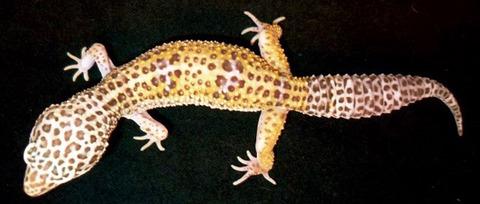Our official English website, www.x-mol.net, welcomes your
feedback! (Note: you will need to create a separate account there.)
Mechanics and kinematics of fluid uptake and intraoral transport in the leopard gecko
Journal of Zoology ( IF 1.9 ) Pub Date : 2020-01-23 , DOI: 10.1111/jzo.12763 V. L. Bels 1 , H. A. Jamniczky 2 , S. Montuelle 3 , J.‐P. Pallandre 1 , K. V. Kardong 4 , A. P. Russell 5
Journal of Zoology ( IF 1.9 ) Pub Date : 2020-01-23 , DOI: 10.1111/jzo.12763 V. L. Bels 1 , H. A. Jamniczky 2 , S. Montuelle 3 , J.‐P. Pallandre 1 , K. V. Kardong 4 , A. P. Russell 5
Affiliation

|
Drinking permits amniote vertebrates to compensate for water loss. Lizards (non‐ophidian squamates) use their tongue to imbibe water, but for most lizards the tongue is also employed in other activities. To determine how these various demands can be accommodated alongside the tongue’s role in drinking, it is necessary to firstly determine the tongue’s function in water uptake and intraoral transport in a lizard that does not use this organ for chemoreception or food prehension. We selected the leopard gecko (Eublepharis macularius) for this purpose. We build upon previous morphological observations of the anatomy of its tongue and oral cavity and explore its drinking behaviour through high‐speed cinematography and cineradiography. This allows us to follow the movement of radio‐opaquely labelled water in association with tongue, jaw and throat movements. The tongue is modified to collect water and to release it into the anterior region of the buccal cavity. Repeated tongue cycles are associated with the shifting of the imbibed water into paired ventrolateral chambers and ultimately to its passage to a single, midline posterior chamber prior to swallowing. Tongue movements, capillarity and pressure changes due to hyolingual movements cause water to be moved posteriorly along specific pathways prior to swallowing, bypassing the airways and dorsal surface of the mid‐ and hind tongue. In this licking‐based lingually driven approach to drinking, only small volumes of water can be gathered at a time, with a drinking bout consisting of 20–30 tongue cycles before emersion and swallowing occur. This mechanism differs from drinking in turtles and snakes, which do not employ licking and may take in larger quantities of water. We advance the hypothesis that all lizards have conserved this pattern of tongue‐based water uptake and precisely directed intraoral fluid transport, with specializations for tongue‐based food capture and/or lingually based chemoreception being superimposed thereupon.
中文翻译:

豹纹壁虎的液体吸收和口腔内运输的力学和运动学
喝水可以使羊膜脊椎动物补偿水分流失。蜥蜴(非哲学家的鳞茎)用舌头吸收水,但是对于大多数蜥蜴来说,舌头也用于其他活动。为了确定如何满足各种需求以及舌头在饮酒中的作用,首先需要确定舌头在不使用该器官进行化学感受或食物吸收的蜥蜴的吸水和口腔内运输中的功能。我们选择了豹纹壁虎(Eublepharis macularius) 以此目的。我们以舌头和口腔解剖学的先前形态学观察为基础,并通过高速摄影和电影摄影技术探索其饮酒行为。这使我们能够跟踪不透射线的水与舌头,颌骨和喉咙的运动。修改舌头以收集水并将其释放到颊腔的前部区域。重复的舌头循环与吞入的水转移到成对的腹侧室有关,并最终导致吞咽前通入单个中线后室。舌头运动引起的舌头运动,毛细血管和压力变化会导致水在吞咽之前沿着特定的路径向后移动,绕过中舌和后舌的气道和背表面。在这种基于舔舌的语言驱动的饮酒方法中,一次只能收集少量的水,并且在发作和吞咽之前,饮水循环由20–30个舌头周期组成。这种机制不同于在乌龟和蛇中喝水,后者不舔舔,可能会吸收大量的水。我们提出这样的假设,即所有蜥蜴都保留了这种基于舌头的水摄取和精确定向的口腔内液体运输的模式,并在其上叠加了基于舌头的食物捕获和/或基于舌头的化学感受的专业知识。在出苗和吞咽之前,应进行20到30个舌头周期的饮酒。这种机制不同于在乌龟和蛇中饮水,后者不舔舔,可能会吸收大量的水。我们提出这样的假设,即所有蜥蜴都保留了这种基于舌头的水摄取和精确定向的口腔内液体运输的模式,并在其上叠加了基于舌头的食物捕获和/或基于舌头的化学感受的专业知识。在出苗和吞咽之前,应进行20到30个舌头周期的饮酒。这种机制不同于在乌龟和蛇中喝水,后者不舔舔,可能会吸收大量的水。我们提出了这样的假设,即所有蜥蜴都保留了这种基于舌头的水分摄取和精确定向的口腔内液体运输的模式,并在其上叠加了基于舌头的食物捕获和/或基于舌头的化学感受的专业知识。
更新日期:2020-01-23
中文翻译:

豹纹壁虎的液体吸收和口腔内运输的力学和运动学
喝水可以使羊膜脊椎动物补偿水分流失。蜥蜴(非哲学家的鳞茎)用舌头吸收水,但是对于大多数蜥蜴来说,舌头也用于其他活动。为了确定如何满足各种需求以及舌头在饮酒中的作用,首先需要确定舌头在不使用该器官进行化学感受或食物吸收的蜥蜴的吸水和口腔内运输中的功能。我们选择了豹纹壁虎(Eublepharis macularius) 以此目的。我们以舌头和口腔解剖学的先前形态学观察为基础,并通过高速摄影和电影摄影技术探索其饮酒行为。这使我们能够跟踪不透射线的水与舌头,颌骨和喉咙的运动。修改舌头以收集水并将其释放到颊腔的前部区域。重复的舌头循环与吞入的水转移到成对的腹侧室有关,并最终导致吞咽前通入单个中线后室。舌头运动引起的舌头运动,毛细血管和压力变化会导致水在吞咽之前沿着特定的路径向后移动,绕过中舌和后舌的气道和背表面。在这种基于舔舌的语言驱动的饮酒方法中,一次只能收集少量的水,并且在发作和吞咽之前,饮水循环由20–30个舌头周期组成。这种机制不同于在乌龟和蛇中喝水,后者不舔舔,可能会吸收大量的水。我们提出这样的假设,即所有蜥蜴都保留了这种基于舌头的水摄取和精确定向的口腔内液体运输的模式,并在其上叠加了基于舌头的食物捕获和/或基于舌头的化学感受的专业知识。在出苗和吞咽之前,应进行20到30个舌头周期的饮酒。这种机制不同于在乌龟和蛇中饮水,后者不舔舔,可能会吸收大量的水。我们提出这样的假设,即所有蜥蜴都保留了这种基于舌头的水摄取和精确定向的口腔内液体运输的模式,并在其上叠加了基于舌头的食物捕获和/或基于舌头的化学感受的专业知识。在出苗和吞咽之前,应进行20到30个舌头周期的饮酒。这种机制不同于在乌龟和蛇中喝水,后者不舔舔,可能会吸收大量的水。我们提出了这样的假设,即所有蜥蜴都保留了这种基于舌头的水分摄取和精确定向的口腔内液体运输的模式,并在其上叠加了基于舌头的食物捕获和/或基于舌头的化学感受的专业知识。











































 京公网安备 11010802027423号
京公网安备 11010802027423号